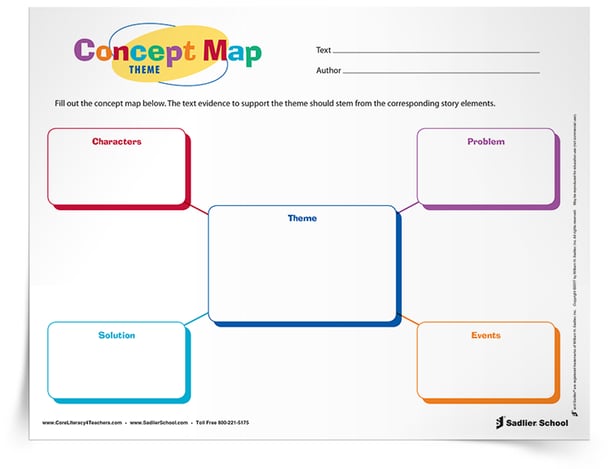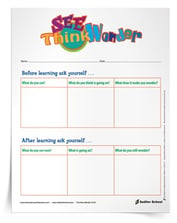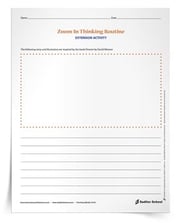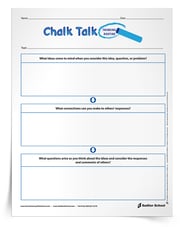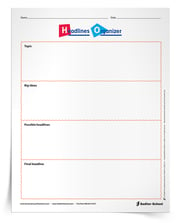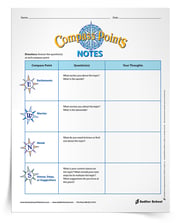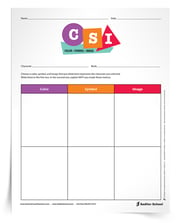May 2, 2017 CL Teaching Strategies Charts & Org, ELA PD - Literacy, ELA PD - Thinking Routines, ELA K-5, ELA Focus - Reading, ELA Resources - Graphic Organizers, Core Literacy
How to Use the Generate-Sort-Connect-Elaborate Thinking Routine
By: Erin Lynch
Attention all principals and teachers! Today I'm highlighting another 'thinking routine' from the book Making Thinking Visible: How to Promote Engagement, Understanding and Independence for All Learners by Ron Ritchhart, Mark Church and Karin Morrison. If you aren't familiar with my previous posts discussing this book, click here!
Get the FREE Generate-Sort-Connect-Elaborate: Concept Maps Tip Sheet now.
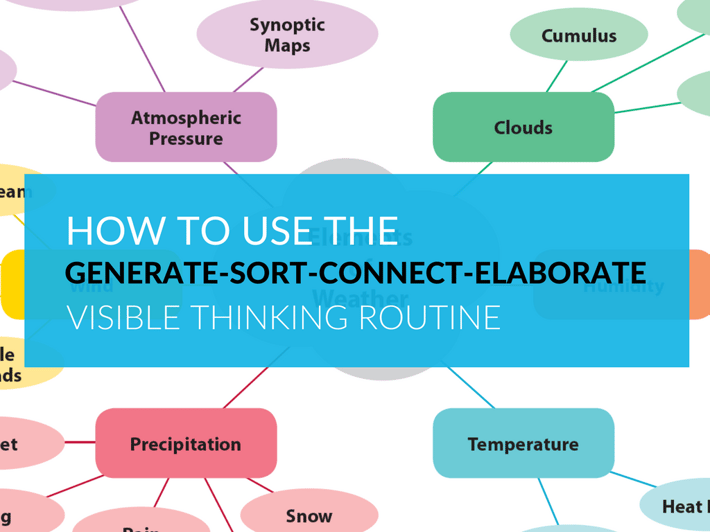
HOW TEACHERS CAN USE VISIBLE THINKING ROUTINES
If you are a teacher, each individual visible thinking routine will help your students deepen their comprehension. The book divides the “thinking routines” into three categories:
1. Routines for Introducing and Exploring Ideas
2. Routines for Synthesizing and Organizing Ideas
3. Routines for Digging Deeper into Ideas
There are 21 “thinking routines” suggested in the book, with seven in each of the three categories.
HOW PRINCIPALS CAN USE VISIBLE THINKING ROUTINES
If you are a principal, this text would be a great choice for a school-wide professional book study and/or a staff development project. Not only would you provide your staff with an invaluable resource, you will most likely increase the level of thinking within the student body. Here's how it will benefit you personally:
-
As you do school walk-throughs or observations, Making Thinking Visible will give you something to target as you enter classrooms
-
By focusing on the “thinking routines” you should find that your teachers observations are easier, because the staff will know what is expected of them
-
It will also help you provide feedback to your staff as you focus specifically on the “thinking routines”
THINKING ROUTINE OF THE MONTH: GENERATE-SORT-CONNECT-ELABORATE: CONCEPT MAPS
The Generate-Sort-Connect-Elaborate: Concept Maps visible thinking routine is a routine for organizing one's understanding of a topic through concept mapping. This routine activates prior knowledge and encourages students to identify connections.
The purpose of concept maps are to help students connect ideas in meaningful ways. A concept map helps students to organize their thinking and to notice how ideas relate to each other.
Concept maps can help students deepen their understanding and while they also benefit from the thinking of others.
One way you can ensure that your students create a good concept map is to start with a strong list of ideas. I like to have my students generate their lists independently and then share with their peers. By combining the lists after the “generate” stage, students are left with a lot more ideas to sort through.
Finally, this routine can used as a pre-assessment at the beginning of a unity to evaluate if students already have background knowledge on the topic. Then at the end of the unit have students complete another concept map to assess what students are remembering and how they are connecting ideas.
INTRODUCING THE GENERATE-SORT-CONNECT-ELABORATE: CONCEPT MAPS THINKING ROUTINE
Before using this routine, students must be familiar with concept maps. To ensure every students feels comfortable making a concept map, I suggest demonstrating how to create a concept map with the whole class.
I also like to give each student their own Generate-Sort-Connect-Elaborate: Concept Maps Tip Sheet to keep in their reading journal or folder. Students can reference this tip sheet when they create future concept maps.
Once students are familiar with the idea of concept maps instruct them to:
-
Generate a list of ideas that come to mind when thinking about this concept
-
Sort the ideas based on understanding or complexity. More complex ideas should be placed on the outside of the map
-
Connect ideas that have something in common. Briefly write what connects the ideas
-
Elaborate on their thoughts by adding new ideas that extend or expand on initial ideas
HOW TO USE THIS THINKING ROUTINE TO SUPPORT LITERACY
Being a literacy specialist, I of course use concept maps with novels and short texts, but my colleagues tell me that concept maps also work really well with many concepts in science and social studies.
At the elementary level, I find the most successful literacy concept maps start with a character or theme of the book as their central topic.
Available for download is the Theme Concept Map Organizer. My students decide on the theme of the book and generate ideas about how that theme is made evident through characters' words and actions, the problem, events in the book, or the solution.
IN SUMMARY
The Generate-Sort-Connect-Elaborate routine is for organizing one's understanding of a topic through concept mapping. Concept maps help uncover students' knowledge of a topic in a non-linear way.
Students can continue generating, connecting, and elaborating new ideas until they have a good representation and understanding of a topic.
RELATED RESOURCES:
|
|
|
|
|
|
|
|





